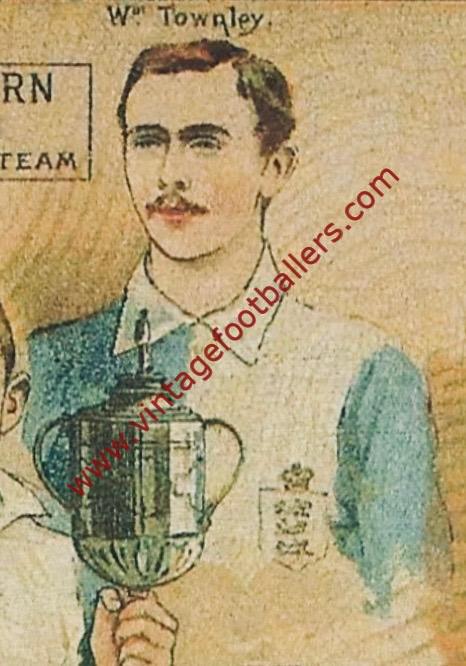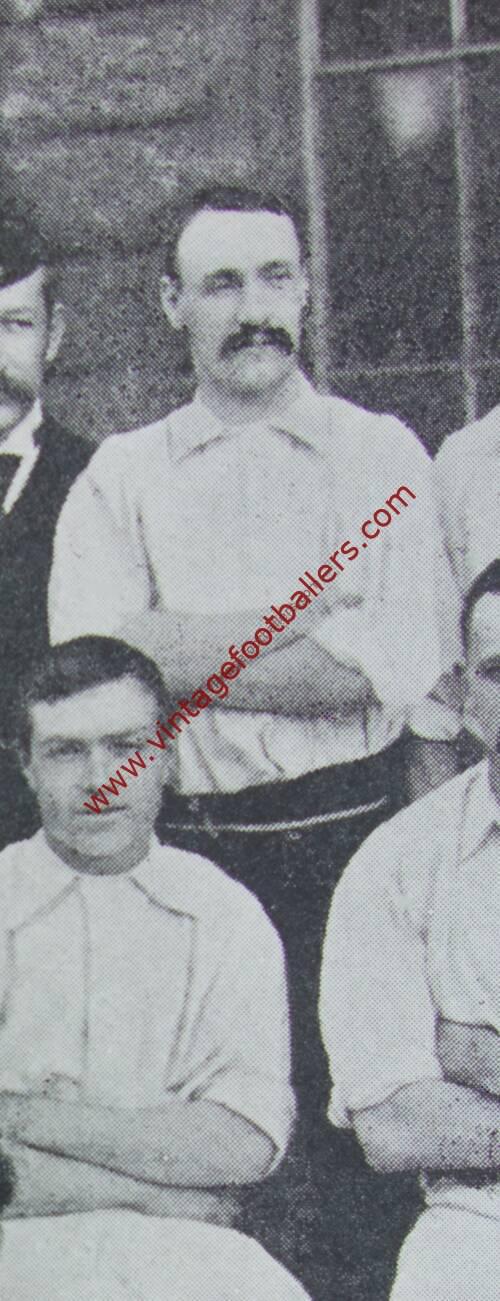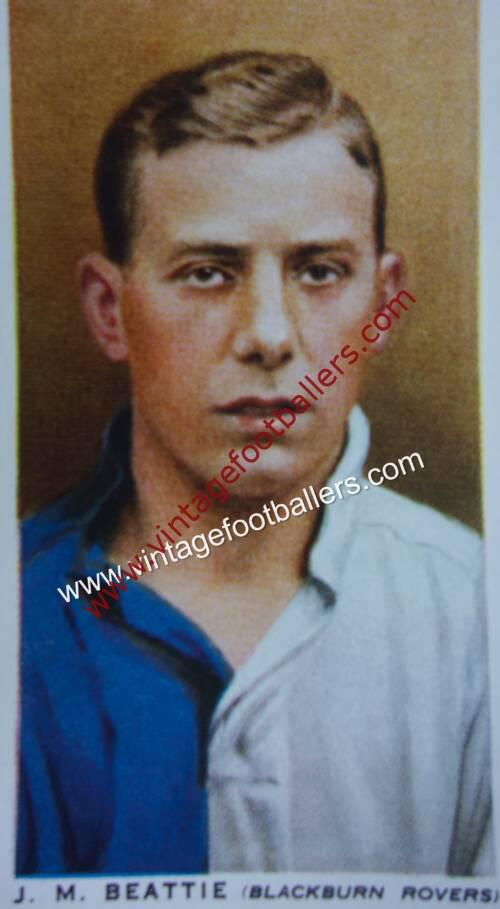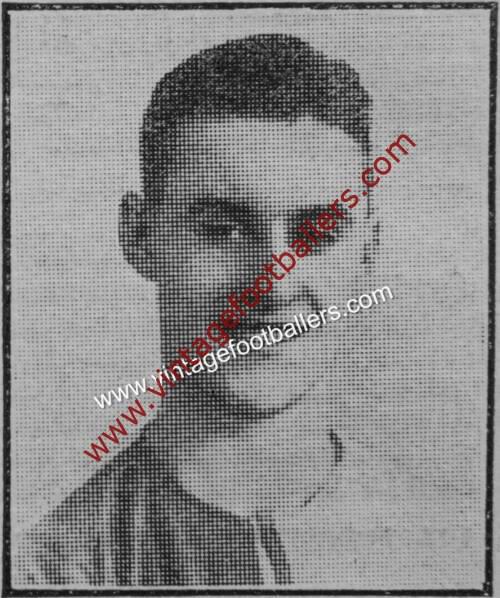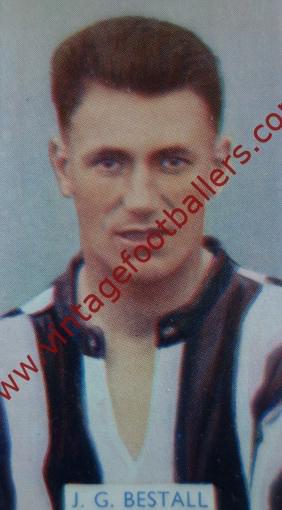Description
Blackburn, Lancashire born outside left Billy Townley’s football career began with Blackburn Swifts in the early 1880’s. He than joined Blackburn Olympic in 1883. His playing position at both Swifts and Olympic was centre forward but after he joined Blackburn Rovers in 1886 he switched to the left wing. Townley’s technique to deter defending full backs was to throw his arms up in the air, thus startling his opponent; Townley swept past to make an attack. He also made one appearance for Lancashire club Colne in January 1887. After the formation of the Football League, Townley, playing as a winger, made his Football League debut at Leamington Road, then home of Blackburn Rovers, against Accrington on 15th September 1888 in Rovers’ inaugural League fixture. The match ended as a 5-5 draw, with Townley scoring the second and fourth goals for Rovers. He scored 10 goals during the campaign as Rovers finished fourth in the League Championship and also played in their FA Cup run, which saw them lose in a replay in the FA Cup semi final to Wolverhampton Wanderers at The Alexandra Ground, Crewe.
He assisted Blackburn Rovers to win the FA Cup in 1890 and 1891. In the first of these Final appearances against Sheffield Wednesday at The Kennington Oval, the outside left made history by scoring a hat-trick in a 6-1 victory, earning the distinction of becoming the first player to score a hat-trick in an FA Cup Final. He scored another goal, sealing the match, in the successful defence of the Cup as Rovers overcame Notts County 3-1 the following year, again at The Kennington Oval. Townley’s total of four goals in FA Cup finals has to date only been bettered once, by Liverpool’s Ian Rush, who scored five goals in three finals appearances in the 1980’s.
Having first been selected for an England squad for the same fixture a year before, when he was a non playing reserve, Townley was capped twice for England, first in 1889, when he made his international debut that February in a 4-1 win over Wales at The Victoria Ground, Stoke and again in March 1890, when he scored a hat-trick in a 9-1 victory over Ireland at Thee Ulster Cricket Ground, Belfast. He was selected twice more for England squads over the next year, both for matches against Scotland, but on each occasion he was a non playing reserve.
In 1891-92 Townley scored 11 goals during Rovers’ campaign, but he briefly left Rovers to join Northern League club Stockton for a season before returning to Ewood Park in thee 1893-94 close season, scoring 11 goals as Rovers finished fourth in the League Championship, and also playing as Rovers again reached the FA Cup semi final, where eventual winners Notts County revenged themselves on Blackburn with a 1-0 victory at Bramall Lane. At the end of the season he left Blackburn Rovers and moved to Second Division club Darwen after 49 goals in 118 appearances for Blackburn, scoring a brace in each of his first two matches for Darwen and top scoring for them with 13 goals during their 1894-95 campaign. He had a further season at Barley Bank before joining Manchester City after 16 goals in 45 appearances, where his playing career ended after he suffered a serious head injury after just 3 appearances in September and October 1896.
However having left football for several years, perhaps his lasting legacy is defined as an important pioneer of the game in Germany, leading Karlsruher FV and SpVgg Fürth to three German Championships as a coach. In Germany, as in the rest of Europe at the time, the game was strictly amateur in character and players often had to contribute to team expenses. For a club to have a coach was not yet a matter of course, but rather a luxury, as it was more common then for a senior player or club functionary to fill the role and carry out the tasks of a coach. Coaches were often hired for special occasions only, or for a brief period to help develop the skills of a team, before they moved on.
Townley’s first coaching job was with Deutscher FC of Prague who were beaten by VfB Leipzig in Germany’s first national championship staged in 1903. He later joined Karlsruher FV, losing finalists in 1905, and led them to a their only national title in 1910.
The following year he was hired by the northern Bavarian club SpVgg Fürth. This club owned the most advanced facilities in Germany and was quickly becoming the largest club in the country with a membership approaching 3,000. Two months after his arrival Fürth lost only 2-1 against crack English side Newcastle United. He guided the club to its first two Bavarian Championships (Ostkreismeisterschaft) which heralded the onset of a golden era that would last into the 1930’s which saw the club become one of the most dominant football sides in the country.
In December 1913 Townley got the call from Bayern Munich, but on a loan arrangement he re-joined Fürth in April of the following year to guide them through the national championship rounds. In the Final Fürth captured its first national title, defeating defending champions VfB Leipzig, holders of a then record three German titles. It is not clear, but he may then have returned to Munich, before the horrors of the First World War overtook the continent, obscuring knowledge of Townley’s activities during this period.
He re-emerged with Bayern Munich in 1919 and coached there until 1921, helping the club earn local and regional titles. It appears he was loaned to the Swiss club FC St. Gallen in August 1920 for what was probably a summer training camp. Townley’s two tenures in Munich coincided with the first two terms of legendary Bayern President Kurt Landauer who oversaw the club’s first national title victory in 1932 during his third term with the Austrian Richard Dombi, later of Feyenoord fame, as coach.
Afterward Townley moved to SV Waldhof in Mannheim in 1921 where he spent two months aiding in the club’s preparations for the South German Championship. The team’s campaign was cut short by eventual national champions 1. FC Nürnberg. It then appears that he may have coached in Sweden before joining SC Victoria Hamburg where he and his son Jimmy, playing as a striker, spent a couple of seasons. In 1923 Townley returned to St. Gallen in Switzerland where he stayed until February 1925.
Townley interrupted his time in Switzerland for a four-month stint with the Dutch national team to guide them through the 1924 Olympics in Paris. In the semi-finals the Netherlands lost a closely fought match to Uruguay, the dominant side of that era who counted the legendary Andrade and Pedro Cea in their ranks, and had to settle for fourth place.
In May 1926 Townley rejoined SpVgg Fürth for the Championship Final in which they overcame Hertha Berlin to win their second national title, the third national title to his credit. A year later he was coaching 1925 Finalists FSV Frankfurt and spent some time working with nearby Union Niederrad. In 1930 Townley returned for a third time to Fürth, with the club winning the South German Championship before being ousted from the national play-offs in the quarter finals by the defending champions Hertha Berlin. He then coached Eintracht Hannover in 1932
Now in his mid-60s, Townley took up his last known posting later in 1932 with Arminia Hannover, then a strong regional side. Arminia defeated Dresdner SC in a quarter-final match, but lost in the next round at home to eventual champions Fortuna Düsseldorf, starring the legendary Paul Janes. This marks the zenith of Arminia’s achievement and the last significant role of a great pioneer of the game in Germany, and he retired from football in 1934.
His son, Jimmy Townley, played for Tottenham Hotspur, Brighton and Clapton Orient in the late 1920’s.

